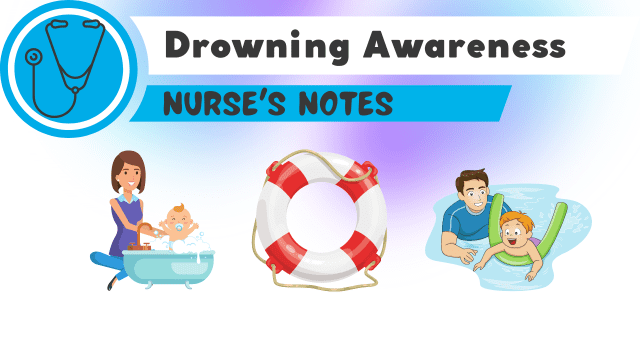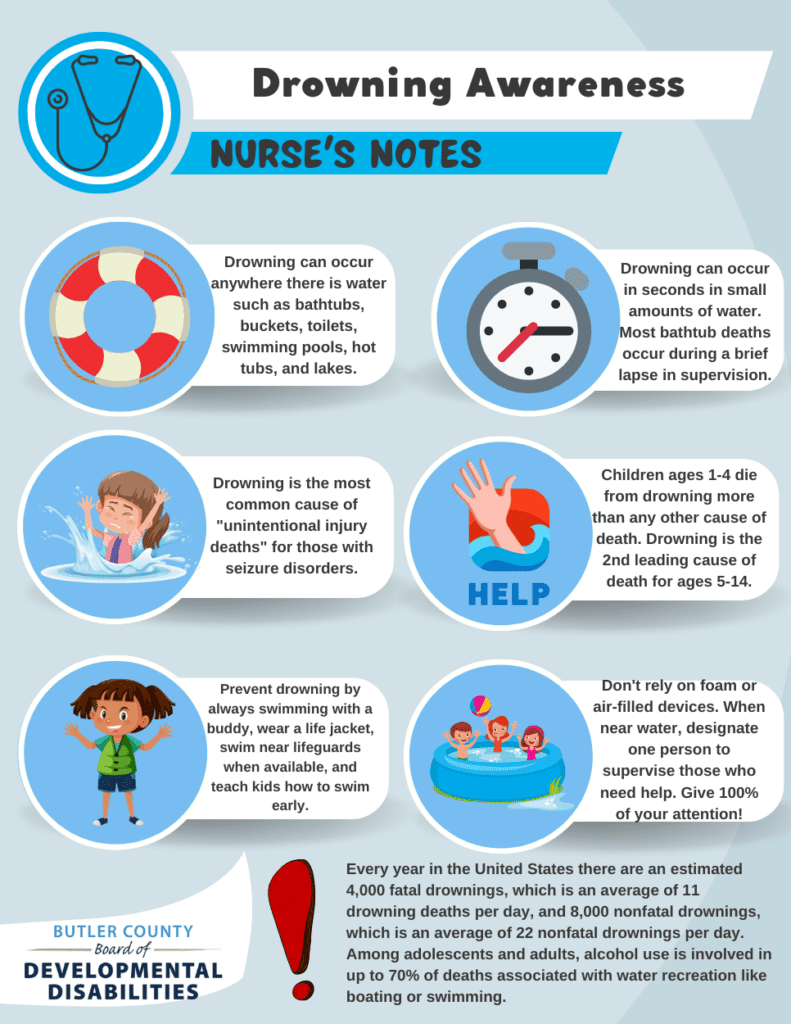
Nurse’s Notes: Drowning Awareness
Every month, our staff nurses share important health updates. This month, our nurses are talking about how to prevent drowning.
Every year in the United States there are an estimated 4,000 fatal drownings, which is an average of 11 drowning deaths per day, and 8,000 nonfatal drownings, which is an average of 22 nonfatal drownings per day. Among adolescents and adults, alcohol use is involved in up to 70% of deaths associated with water recreation like boating or swimming.
Drowning is the process of experiencing respiratory impairment from submersion or immersion in liquid.
Drowning can fall into two categories: fatal and nonfatal. Fatal drowning happens when drowning results in death. Nonfatal drowning has a range of outcomes, from no injuries to very serious injuries such as brain damage and permanent disability.
Where and When can Drowning Occur?
- Anywhere there is water such as bathtubs, buckets, toilets, swimming pools, hot tubs, lakes, ponds, oceans, ditches, trenches, etc.
- Drowning can happen quickly, sometimes in seconds in small amounts of water quietly, without yelling or splashing.
Most bathtub deaths occur during a brief lapse in supervision. Drowning can happen in the time it takes to answer the phone. For those with seizure disorders, drowning is the most common cause of “unintentional injury deaths,” and the bathtub is the most common site for drowning. More children ages 1–4 die from drowning than any other cause of death. For children ages 5–14, drowning is the second leading cause of “unintentional injury deaths” after motor vehicle crashes.
What Strategies can be Used to Prevent Drowning?
- Teach children to swim early.
- Always swim with a buddy. This is especially helpful for people with seizure disorders or other medical conditions that increase the risk of drowning.
- Choose swimming sites that have lifeguards when possible.
- Wear a Coast Guard approved life jacket when swimming or boating. 83% of people who died in boat incidents in 2021 were not wearing life jackets.
- Do not rely on foam or air-filled devices for anyone. These are not safety devices!
- Designate one person to supervise someone in or near water. Supervise closely and constantly. Give 100% of your attention ALWAYS.
- Never leave a child or person who cannot support themselves alone in the bathtub or near water.
- For dependent individuals around water use “Touch Supervision,” which means be close enough to reach the person at all times.
- Avoid drinking alcohol or using drugs before or during swimming, boating, or other water activities.
- Be aware of medications that may impair balance, coordination, and judgment creating a higher risk for drowning.
- Use effective barriers around water sources.

Want to learn more about how to prevent drowning? Visit the CDC or DODD website!
